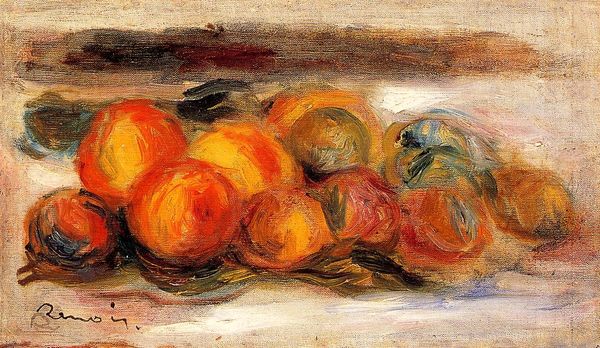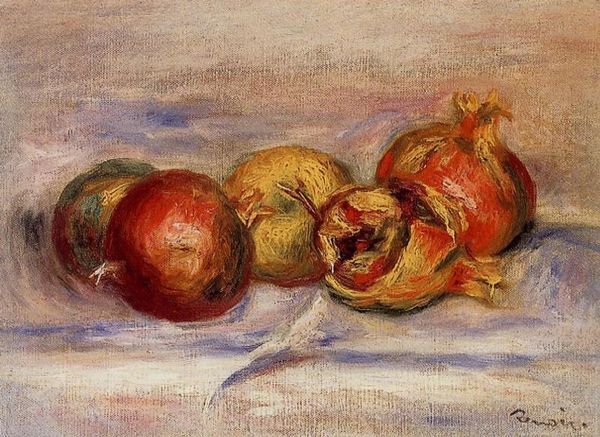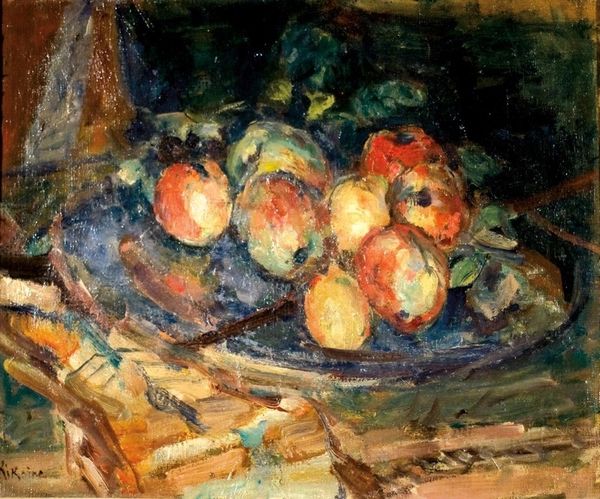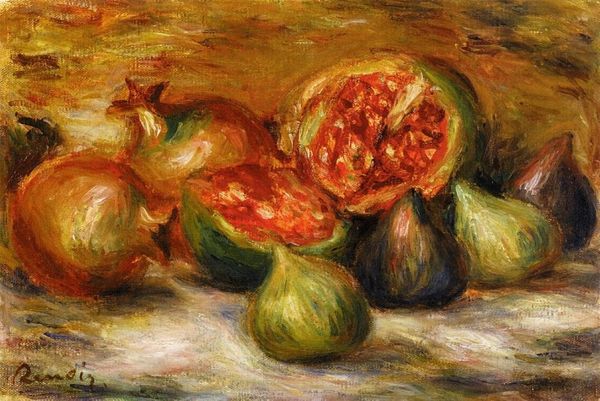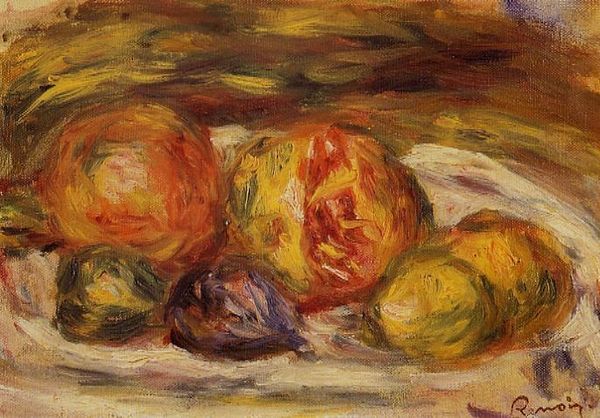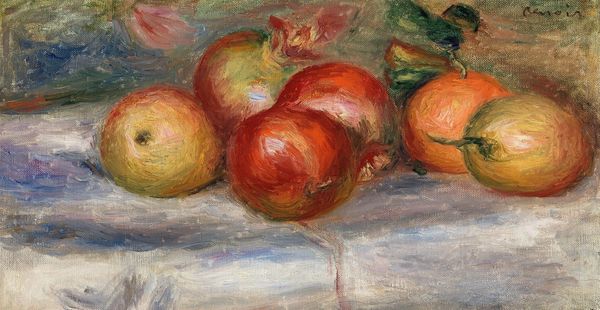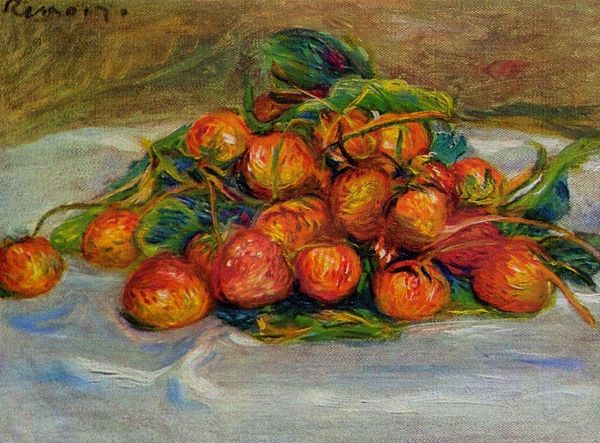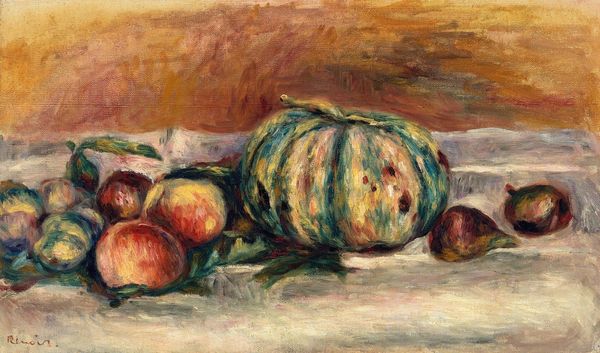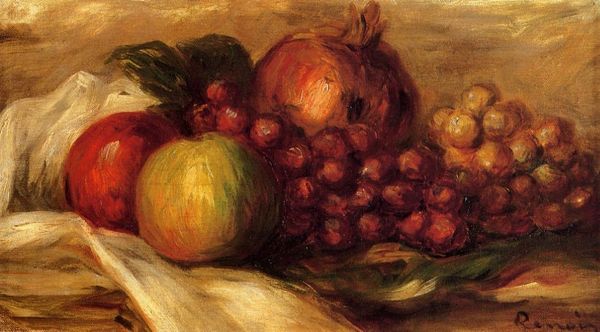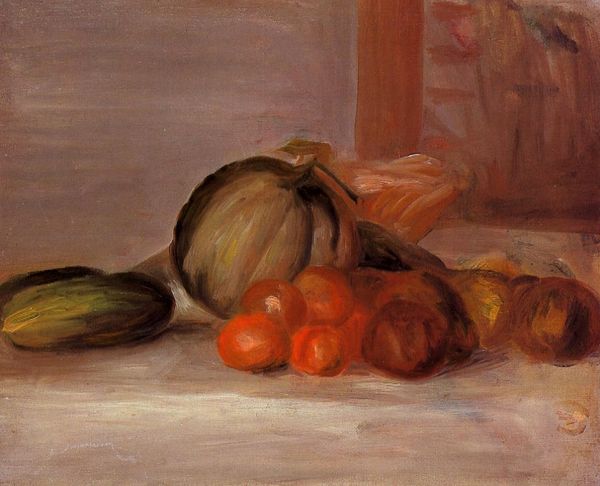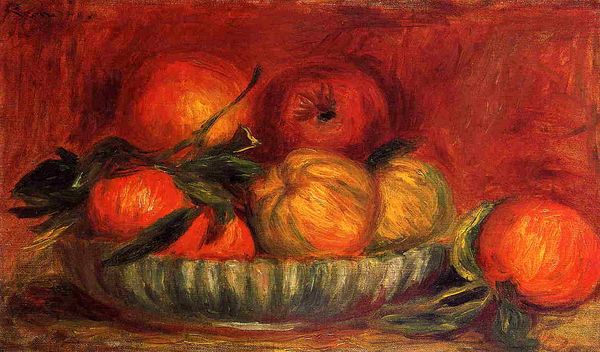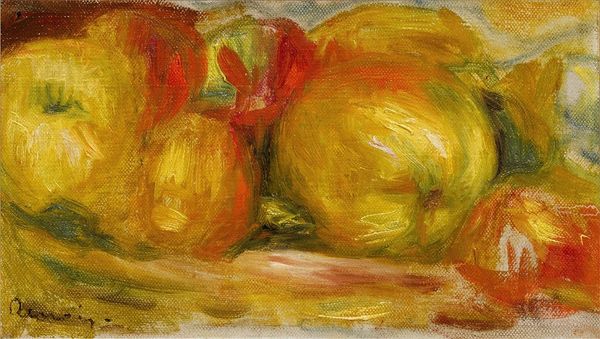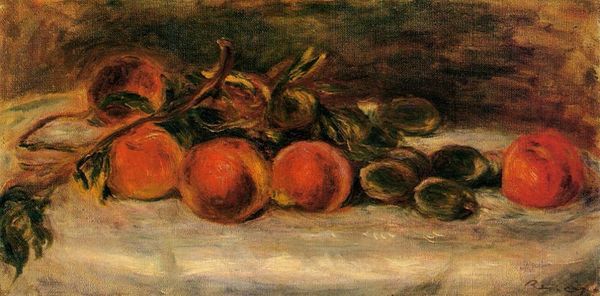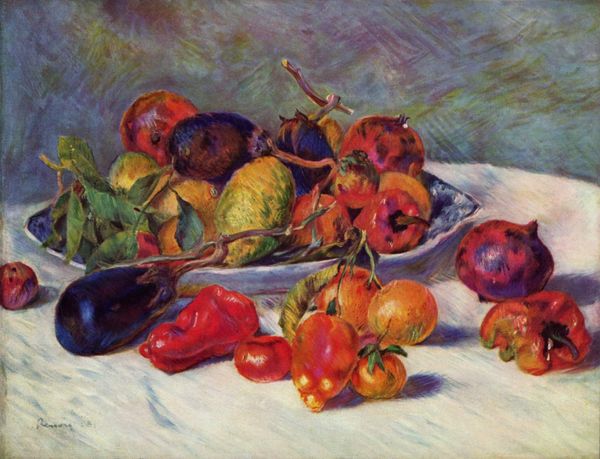
Copyright: Public domain
Curator: What immediately strikes me about Renoir’s “Medlar Branch,” completed around 1900, is the incredible softness despite the strong oranges and greens. The painting feels almost dreamlike. Editor: It does have that signature impressionistic haziness! Looking at it now, and given when it was made, it reminds me how rapidly fruit production and availability changed at the turn of the century. Still lifes stopped being straightforward depictions and became explorations of abundance and sometimes even excess, reflections of a changing economic landscape. Curator: That’s a fantastic point. Think about how, historically, certain fruits were available only at particular times of the year. This oil painting reflects a period where advancements in agriculture and transportation began blurring those lines, shifting our relationship with seasonality. Editor: And with our labor too, right? We often forget how food is related to land and who works it. The loose brushstrokes of the leaves and the background almost camouflage any signs of production—it obscures the physical labor and political decisions necessary to create this ‘natural’ scene. Curator: Indeed. Technically speaking, Renoir's focus seems less on precise botanical accuracy and more on capturing the essence of light and color. Notice the way the brushstrokes suggest form rather than define it, creating a sense of movement and vitality. This is really at the core of the impressionist movement isn't it: trying to show not what we see, but *how* we see? Editor: It also subtly participates in the romanticisation of nature at a distance that divorces urban populations from land injustice, which arguably continues to affect the art market and exhibition practices today. Whose voices are prioritised, which stories are considered valuable... all valid points for us to engage with. Curator: Looking at it one last time, the painting exemplifies the intersection of fleeting beauty and profound societal shifts—something to consider! Editor: I agree, these fruits are a reminder to engage actively with both what's represented, and with how the representation itself impacts our lived reality.
Comments
No comments
Be the first to comment and join the conversation on the ultimate creative platform.
